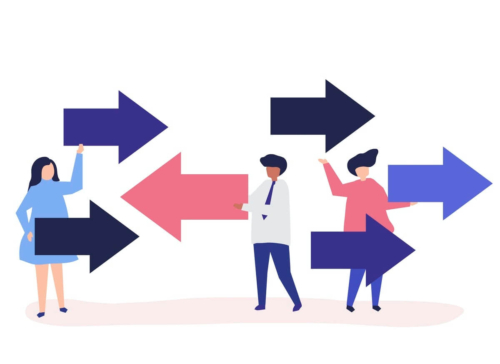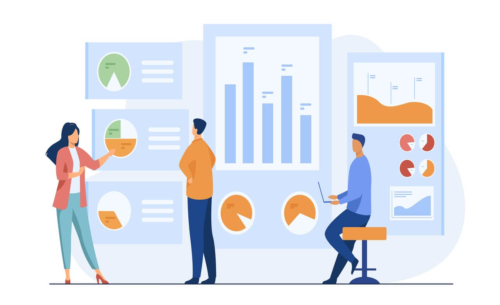We live in a day and age when the customer is almost always online. Not only that, but they are using numerous tools, devices, and apps to communicate with their favorite brands. No longer are they just interested in sending an email, nor will they wait for one of your support agents to pick up the phone. Nowadays, the customer wants instant access to your support team via multiple online and offline channels. This means that you need to adopt an omnichannel support strategy in order to increase customer satisfaction.
This strategy should employ various communication tools and methods, including phone, SMS, direct messaging, video, and of course, good old email communication. Now, seeing as how email is one of the best ways to generate leads and achieve numerous sales and marketing goals, you might be wondering how to best utilize it in your omnichannel support system.
Well, you’re in luck – here’s your guide to email marketing as a part of your omnichannel support strategy and how you can use it to take your brand forward.
Pooling data from other support channels
By now, you should know that email marketing thrives when combined with other marketing methods, as you can use it to complete your multi-channel marketing campaigns. However, you might not have known that you can also boost email communication by infusing your email strategy with relevant data from various support channels.
This is the moment when you need to ensure seamless cross-department collaboration between your marketing and support teams. Doing this will allow you to extract valuable data from various brand-customer touchpoints and communication methods to fuel your email strategy.
Every channel you use to communicate with customers and online audiences serves as a data pool. These include social media messaging and comments, phone communication, SMS messaging, video calls with clients, and of course, email correspondence itself.
Be sure to analyze all of these channels to extract keywords, generate word clouds, and extract valuable data about your customers. This will allow you to generate truly personalized emails that will elevate CX (customer experience) and satisfaction.
Using email for better personalization
As we’ve mentioned above, email is one of the most powerful ways to bring a personalized experience to your customers. Assuming that you are using a comprehensive CRM solution to gather customer data, you can take your email personalization to the next level.
However, that doesn’t mean that you shouldn’t automate certain emails for the sake of efficiency. Rather, it means that you should use emails to enhance the level of personalization across your entire support system.
One of the best ways to do that is simply to stay in touch with customers via emails and to remember to follow up on every call.
Importance of following up on phone calls
Phone communication is paramount to the success of your support department and omnichannel support strategy. Why? Because people nowadays want to communicate with brands in real-time. No longer will they wait for you to reply to an email, and they might not even be willing to wait for a response on Messenger or Instagram, either.
If you want to enhance the overall customer experience, you need to have a phone system. That said, traditional phone systems don’t cut it anymore, especially if you want to have an amazing email follow-up strategy.
You need a business phone system like VoIP that brings various digital features and unifies your communication structure. It’s important to do your research and read professional reviews about Nextiva and other popular providers to check if they offer features like call recording, analytics, and reporting.
This will be the crucial VoIP feature that you will use to fuel your email follow-up strategy. You can analyze every call to bring a personalized experience to every customer instead of sending them an automated follow-up.
This is a great way to build customer loyalty and show them that they are not just another number in your sales funnel. Be sure to send a follow-up email after every call to summarize the talking points, educate your customer, and thank them for their loyalty.
Gathering data via email to boost support
Of course, it’s not just about fueling your email communication with data from other support channels. It’s also about fueling your entire support strategy with relevant email marketing insights. Always remember that email data and findings are not just good for boosting email communication.
Rather, these findings can be crucial for your marketing, sales, and support departments. For example, by reducing your email bounce rate and improving your email KPIs, you can find out what your customers respond to best.
Then, you can use the same or similar solutions to improve your communication via messaging apps, phone calls, and even video. Be sure to analyze what makes your emails resonate with customers and use those findings to boost support across the board.
Directing customers to other support channels
Sometimes, email is not enough to resolve an issue, nor is it the best way to communicate with some customers. When you realize that email is not achieving the desired results, you need to switch to other support channels quickly.
However, you can’t do this blindly because you risk losing that personal touch that your email correspondence has built. With that in mind, you need to be able to direct customers to other support channels seamlessly.
Ideally, the same person who handled the email exchange will pick up the phone when that customer calls. If the customer’s problem requires a video call, then the person on the email avatar should be in front of the camera.
This is the level of personalization and innovative CX that you should strive to achieve to build customer loyalty and trust.
Optimizing email content for mobile support
Lastly, don’t forget to optimize all your email content for mobile viewing to make your emails more impactful and relevant. Nothing probably puts off a customer more than an email that doesn’t load properly.
If they have to squint to see the infographic or pinch and zoom and then scroll for ages, you can bet that they’ll delete that email in a matter of seconds. To make your emails genuinely impactful as a part of your omnichannel support strategy, they need to be short and to the point, with captivating visuals that fit every screen size.
Wrapping up
Nowadays, you can’t force a customer to communicate with you in a way that doesn’t suit their needs or preferences. This is why having an omnichannel support strategy is paramount.
However, you need to know how email fits into this strategy and how you can use it to take your support system to the next level. Use these tips to generate more leads and improve conversions by leveraging the full power of email in your support strategy.
Author’s bio: Lauren is a digital marketing specialist and business consultant from Melbourne. After getting a marketing degree, she started working with Australian startups on business and marketing development. Lauren writes for many relevant, industry-related online publications, and she’s one of the authors behind Bizzmark Blog.




